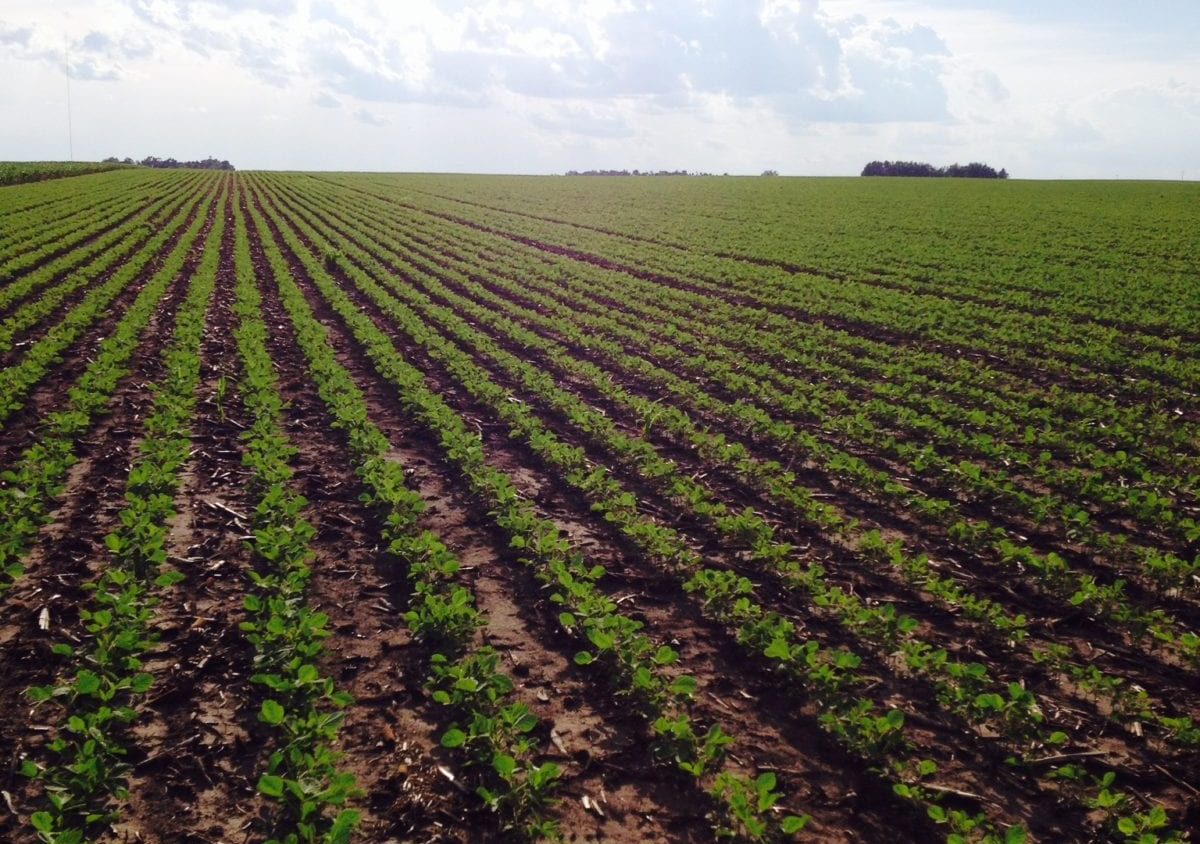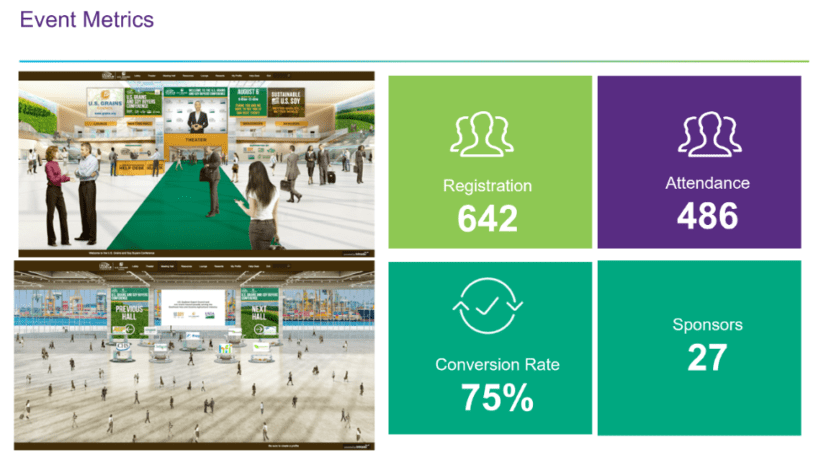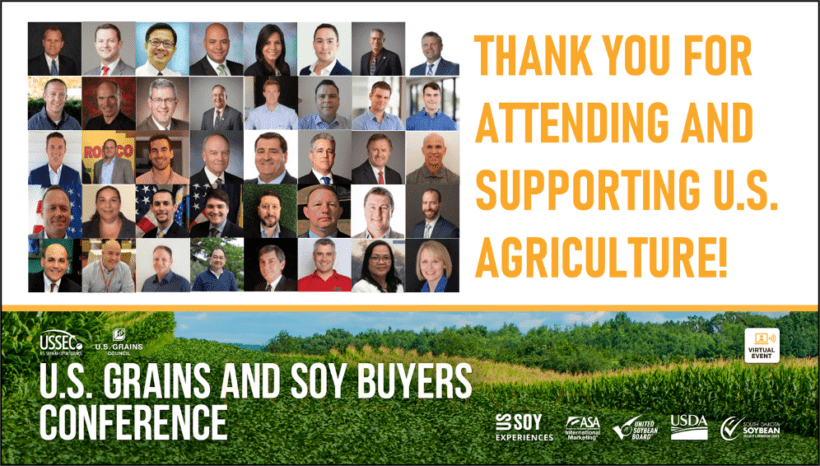Nearly 500 Participants from SEA’s Feed and Livestock Industry Attend Virtual U.S. Grains and Soy Buyers Conference
- Category:
- General News
- Virtual Events

Event establishes the U.S. as the preferred and reliable one stop solution provider for better value and quality agricultural products
For the past 15 years, USSEC, together with the U.S. Grains Council (USGC) and the U.S. Department of Agriculture’s (USDA) Foreign Agricultural Service (FAS) has co-organized the annual Southeast Asia U.S. Agricultural Co-operators Conference, typically in August just before the start of the U.S. corn/soybean crop harvest. This major regional event brings together key industry participants (importers, end-users, and suppliers, among others), trade and agricultural association leadership, regional government authorities, U.S. agricultural co-operators and related U.S. government agencies, U.S. corn and soybean grower leaders, U.S. corn and soybean members and stakeholders including USSEC and USGC colleagues. This event, along with others that USSEC has organized since the COVID-19 lockdown, has served to demonstrate that U.S. agriculture continues to be open for business and that agricultural exports are vital to U.S. agriculture.
This year, the U.S. Grains and Soy Buyers Conference (in place of the annual live Southeast Asia U.S. Agricultural Co-operators Conference) took place virtually from August 4 to 6. The digital conference was well received with strong participation from the industry as it brought together more than 450 guests from 23 countries, including 204 importer participants representing 129 companies and 94 exporter participants representing 40 trade companies. Networking, which has always been a trademark and highlight of USSEC’s business development conferences, was organized around a virtual platform this year that was built around 3 virtual meeting halls that hosted sponsor booths comprised of 27 U.S. exporters and partner organizations.
“We’ve got an important story to tell you today – despite facing a public health issue and global uncertainty, our farmers’ commitment to producing safe and reliable soy has never wavered. U.S. soybean farmers greatly value the relationships we have with you, our partners,” said Jim Sutter, USSEC CEO. “The value of our partnerships is immeasurable – and something that helps differentiate the U.S. Soy Advantage from that of our competitors. By hosting events like this one with the U.S. Grains Council, we can learn directly about your biggest challenges and address any concerns. These conferences allow us all to connect, learn from each other, and facilitate trade. And these events contribute to the shared belief that exports are vital to global economic development.”
“Our collective goal is to expand the global market for U.S. grains, oil seeds and related products, including here in Southeast Asia and Oceania. We know this goal is best reached when our work serves you, our customers, as much as it does our members, the U.S. farmer, U.S. agribusiness sector and various ag-related organizations.,” said Ryan LeGrand, President and CEO of USGC. “We're excited to be here in this growing and dynamic market. Southeast Asia and Oceania collectively represent a rapidly growing 118 million metric ton feed market.”
U.S. soybean and corn growers provided their on-the-ground perspectives on the 2020 crop. Grower leaders Lance Rezac, Kansas farmer and USSEC and United Soybean Board (USB) director; Kale Petersen, Iowa farmer and grain merchandiser with River Valley Cooperative; Josh Gackle, North Dakota farmer and director for the American Soybean Association (ASA); and Keith Truckor, Ohio farmer and director for the Ohio Corn Marketing Program all shared their progress this growing season and provided information about their conservation practices and precision technology used to produce sustainably-grown products for international customers. They were joined by Frayne Olson, Crop Economist and Marketing Specialist with North Dakota State University in a panel discussion on U.S. Grain & Soy Production Outlook where insights were provided on the impact of COVID-19, farming technology, price outlook, and disease pressures.
The National Oilseed Processors Association (NOPA) represents the soybean and oil seed processors in the U.S. The organization’s 13 members produce 94% of the soybeans that are crushed. NOPA’s president, Thomas Hammer stated, “NOPA members are very much open for business and we're eager to work with our existing customers and to find new customers in the region.”
Gary Martin, president and Chief Executive Officer of the North American Export Grain Association (NAEGA), echoed the importance of partnerships, saying, “Ultimately from producer throughout the value chain, our lives are becoming more complex, but the opportunities are there as we are being asked to be resilient, responsible, and reliable, as we work together to provide for affordable access to grains and oil seeds, to grow economies, compete, be profitable and act sustainably. Ultimately we need to keep the customer happy.”
The importance of international world markets was also highlighted by Anthony Jones, International Trade Specialist with FAS. Headquartered in Washington, D.C., FAS currently has 93 overseas offices covering more than 171 countries to represent USDA and U.S. agriculture interests. “This international presence is essential for implementing international programs,” said Jones, “to quickly identify and address market access issues, provide real-time market intelligence, and identify opportunities by collaborating with industry partners”. More about the work of FAS and specific issues in the region were also discussed by USDA-FAS representatives based in Indonesia, Malaysia, Myanmar, Philippines, Thailand, and Vietnam during a panel session.
In addition, industry speakers discussed global supply and demand outlook for corn, soybeans, and co-products, the impact of COVID-19 on economic outlook and grain and soy supply chain, price, and business risk management. The conference also included several panel discussions and presentations specific to agricultural trade in Southeast Asia, including U.S. soy exports, U.S. grains and co-products exports, port operations and logistics for bulk and container port logistics, the U.S. Soy Sustainability Assurance Protocol (SSAP), and soy sustainability seal initiatives.
Besides hearing first hand from Southeast Asia and Oceania customers on U.S. soy and grains products in terms of their value and advantage offerings, representatives from USSEC and USGC also touched on opportunities for U.S. grains and soy products in Southeast Asia, especially in the animal and aqua feed sectors.
Based on conference evaluation responses, 87.4% rated the conference of high to very high value. 78.5% of the respondents indicated that the conference had been beneficial to very beneficial in terms of providing a platform for business while more than half managed to make new and useful contacts.

